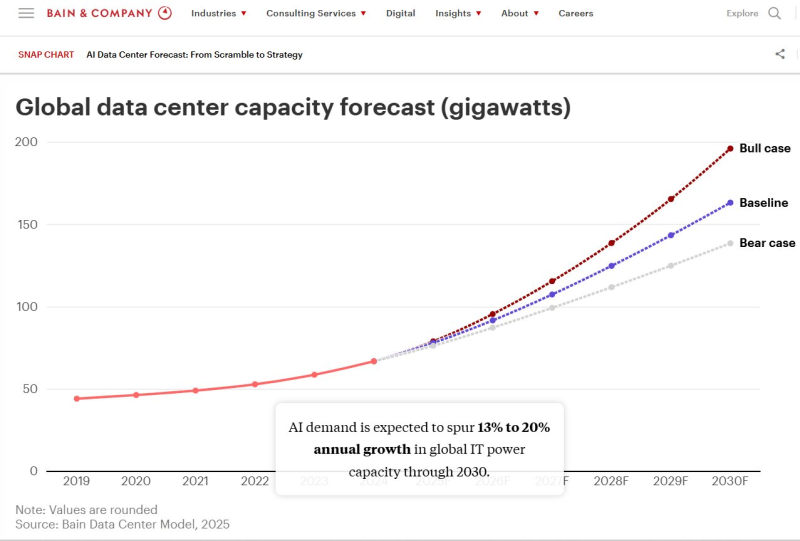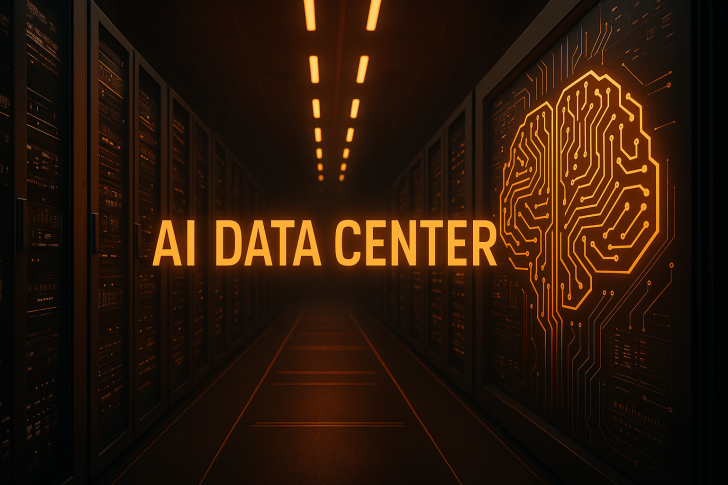● The data center industry is about to go through a massive transformation, and the numbers are pretty wild. According to a forecast from Bain & Company shared by Shanu Mathew, global data center power capacity is set to jump from 67 gigawatts in 2024 to somewhere between 139 GW and 197 GW by 2030. That's annual growth of 13% to 20%—one of the fastest infrastructure buildouts we've seen in modern tech. And it's almost entirely because of AI.

● Bain's baseline scenario puts capacity at 163 GW by 2030, and here's the interesting part: the biggest players—Amazon, Microsoft, Google, and other hyperscalers—are driving most of this expansion. Back in 2020, hyperscalers accounted for just 15% of new data center builds. By 2030, that figure is expected to hit 42%, growing at a blistering 26% compound annual rate. Meanwhile, traditional colocation providers and enterprise data centers are getting smaller slices of the pie.
● But the real story here is what's happening inside these data centers. By 2030, AI will eat up nearly half of all global compute capacity. And it's not just about training massive models anymore—it's inference that's taking over. Inference (basically, running those trained AI models to generate results) is projected to grow at a jaw-dropping 73% annually between 2024 and 2030, roughly doubling the growth rate of AI training. As Shanu Mathew pointed out, this is a huge shift: "AI inference was virtually non-existent a decade ago, yet by 2030 it will power the majority of global compute."
● Geographically, North America is still the heavyweight champion, expected to control 49% of global capacity by 2030, up from 43% in 2020. But Europe, China, and the broader Asia-Pacific region are catching up fast, especially as governments push sovereign AI infrastructure and companies outside the U.S. ramp up their AI ambitions.
● There's also a physical transformation happening. The number of mega data centers—facilities running anywhere from 250 megawatts to over a full gigawatt—is set to explode from fewer than five in 2020 to around 60 by 2030. These aren't your typical server rooms. We're talking massive, power-hungry facilities designed specifically to handle the extreme demands of cutting-edge AI systems.
 Peter Smith
Peter Smith

 Peter Smith
Peter Smith


